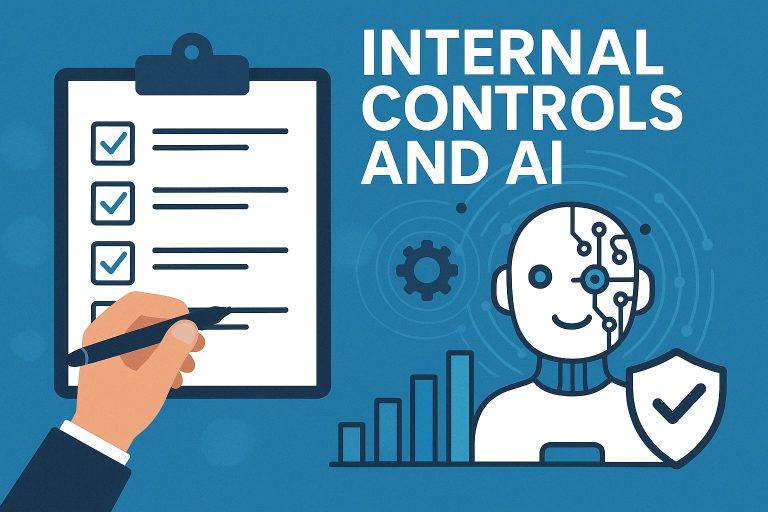Introduction
Audits play a critical role in ensuring financial accuracy, regulatory compliance, and operational efficiency within organizations. Whether the audit is internal or external, a systematic approach is vital for achieving reliable and actionable results. This article outlines the key steps involved in conducting an effective audit, ensuring thoroughness and precision throughout the process.
Step 1: Define the Scope and Objectives
The first step in any audit is to clearly define the scope and objectives.
Scope
Determining the scope involves specifying which areas of the organization will be audited. This could range from financial statements and operational processes to compliance with regulations and IT systems.
Objectives
Establish the goals of the audit. Common objectives include:
- Verifying financial accuracy
- Ensuring compliance with relevant regulations
- Assessing risk management practices
- Identifying areas for improvement
Step 2: Plan the Audit
Once the scope and objectives are defined, the next step is to plan the audit.
Audit Team
Assemble a qualified audit team with the necessary expertise. For internal audits, ensure that team members are independent of the areas being audited to maintain objectivity.
Timeline
Develop a comprehensive timeline outlining the audit process, complete with key milestones and deadlines.
Resources
Identify and allocate the resources needed for the audit, which may include personnel, tools, and relevant documentation.
Step 3: Conduct a Preliminary Review
Before diving into the audit, conduct a preliminary review.
Document Review
Gather and review relevant documents such as financial records, organizational policies and procedures, regulatory guidelines, and previous audit reports.
Risk Assessment
Carry out a preliminary risk assessment to pinpoint areas of high risk that may require more detailed examination during the audit.
Step 4: Develop an Audit Program
Audit Procedures
Create a detailed audit program that outlines specific procedures and tests to be performed. This may include sampling methods, verification techniques, and analytical procedures.
Checklists
Develop checklists to ensure a systematic approach to covering all key areas required for the audit.
Step 5: Execute the Audit
This step involves actual fieldwork and data collection associated with the audit.
Fieldwork
Conduct fieldwork based on the outlined audit program. This includes:
- Data Collection: Collect data through document reviews, interviews, observations, and testing.
- Verification: Verify the accuracy of financial records, compliance with relevant policies and regulations, and the effectiveness of internal controls.
- Sampling: Use sampling techniques to select representative transactions or records for detailed testing.
- Documentation: Carefully document all findings, evidence, and observations systematically to strengthen your conclusions.
Step 6: Analyze Findings
After executing the audit, analyze the collected evidence.
Evaluate Evidence
Evaluate the evidence gathered to identify discrepancies, non-compliance issues, inefficiencies, or areas of risk.
Root Cause Analysis
Conduct a root cause analysis to ascertain the underlying reasons for any identified issues, thus enabling you to provide meaningful recommendations for improvement.
Step 7: Report Findings
Once findings have been analyzed, the next step is to report them effectively.
Draft Report
Prepare a draft audit report summarizing key aspects, including the audit’s scope, objectives, methodology, findings, and actionable recommendations. Strive for clarity and conciseness, avoiding overly technical jargon.
Review and Feedback
Share the draft report with relevant stakeholders for feedback. This might involve management, board members, or external auditors.
Final Report
Incorporate the feedback received and finalize the report, ensuring it delivers actionable recommendations and clearly states the conclusions drawn from the audit.
Step 8: Follow-Up
Action Plan
Work with management to develop an action plan that addresses the audit recommendations. Clearly define responsibilities and timelines for implementing corrective actions.
Monitoring
Monitor the progress of corrective actions to verify that they are being implemented effectively. In cases where necessary, conduct follow-up audits to assess the efficacy of the changes.
Best Practices for Effective Audits
- Independence and Objectivity: Ensure that the audit team maintains independence and objectivity throughout the audit process.
- Professional Skepticism: Approach the audit with a mindset of professional skepticism, questioning assumptions and seeking supporting evidence.
- Continuous Improvement: Utilize audit findings to foster continuous improvement within the organization. Regularly review and update audit practices to adapt to evolving risks and regulatory demands.
- Technology Utilization: Leverage technology, including data analytics and audit management software, to enhance the efficiency and efficacy of the audit process.
Conclusion
Conducting an effective audit requires meticulous planning, systematic execution, and thorough analysis. By adhering to the outlined steps and best practices, organizations can ensure accurate, reliable, and actionable audit results. An effective audit not only verifies financial and operational integrity but also provides valuable insights that drive continuous improvement and mitigate risks. Embracing a structured approach to audits fortifies your organization’s governance and compliance framework, positioning it for sustained success.




